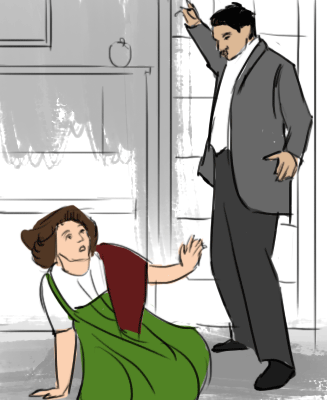A Dollhouse Essay by H.Ibsen
Such plays as A Doll`s House, Ghosts, Pillars of Society written in the middle of 70`s of XIX century by Henrik Ibsen were called new dramaturgy by the critics.
What was new about these pieces of work? First of all, reflection of the present day and display of alive people but not historical characters. Second of all, exposure of bourgeois society`s heartlessness with its propagation of egoistic individualism. It was an innovation in the meaning of content. In the meaning of form, Ibsen rejected traditional methods of scenic performance`s composition (meaning convenient for staging). Conflict is a fight between positive and negative characters in such a play. It is opened in the form of an intrigue and, as a rule, with a happy ending. 
Ibsen depicts a conflict through a confrontation of a man with a hostile activity, which overwhelm or hurt his hearing. Intrigue is not the main thing here but finding out the reasons of these or those deeds and opening one`s inner world. The node of the play are events, which happened previously.
The analysis of the catastrophe happened to the main character is in the center of the play just like the analysis of thoughts and feelings occurring as a reaction to realizing this. Besides that, Ibsen refused from theatrical affectation of the speech, traditional monologues, and conventional lines, addressed directly to the spectators. He replaced all of the above with vivid alive speech. The author was trying to reach naturalness and easiness of his characters` behavior, made to refuse from outside effects replacing them with expressive details.
Working on a new drama, Ibsen made it look and sound clearly in the meaning of composition. He renewed in a new quality the principles of antic dramaturgy in his plays (the unities of place, time and action as a common design).
The beginning of the play dip us into peaceful coziness of Torvald Helmer the advocate. The hostess of this pad, Nora, truly seems to be a dull pampered doll. It looks like her main secret is a secretively eaten almond cookie. But soon enough we get to know that a few years ago in order to save her husband Nora borrowed a great sum of money forging signature on the bill and now hiding it paying this sum of money off gradually. Thus, the main event happened before one starts reading. During the events to unfold, a confrontation between the characters occur each of whom excite pity, thus cannot be unquestionably relegated to negative. Both, Nora, who pulled a crime for the sake of her husband and exactor Krogstad who mis-stepped once but dying to become a full-fledged member of the society again and even Helmer having his heart in boots who lost Nora`s love. The nature of all the characters are put to the test by truth. It turns out that a queachy Krogstad would not put it past under the influence of blossomed feelings to Nora`s friend Khristine Linde. Incorruptible and profound Helmer turns out to be a scoundrel scared of crime`s shadow committed by Nora will cast a slur on his reputation. Without a moment`s hesitation what could possibly made it to where his wife could do such a thing, he accused her of lie and immorality: “You inherited all the lightminded principles of your father. You have neither religion, morality nor sense of duty”, he says. Krogstad`s remission of a claim rapidly change Helmer`s mood: he is ready to go back to basics. The most dramatic change happens in Nora`s soul though.
She realizes how mistaken she was if to speak about her husband thinking he was able of a self-immolation merit for her sake. Nora who saw the light became strict. She feels as if there are plenty of internal strength, does not want to play imposed by her deceased father and husband role of a girly wife and wants to find herself, her true purpose: “I think that first of all I am a human being just like you or at least should try to become one. I know that majority will take your side, Torvald, and that books tell the same. I no longer can be satisfied with what majority say and what is said in the books though. I need to think of these things for a while and to try to figure out things.” A Dollhouse crashed down. Leaving its broken pieces behind, Nora went in another, real life.
Action voltage is reached not by a development of intrigue but with opening an inner world of the main heroine. The most intense moment is the one where Nora awaits for her husband to read a whistle-blowing letter written by Krogstad. She is not afraid of anything, she waits for the miracle: an affectionate husband will say now that he takes the blame upon himself. This awaiting splashes out into a desperate, irreclaimable tarantella, which becomes a symbol of the past life of sorts, which is impossible to return. There is no miracle. And this is a midpoint of the play, the main event in Nora`s life. It seems to everything to be clear now, goodness triumphed. Life cannot be stacked together as a broken cup. That is why a resolution of the play, Nora leaving her husband, does not seem to be a happy conclusion. Nobody knows what happens next but doll-like life is over forever.
Ibsen`s drama was not just a call to fight for female`s independence and self-sufficiency, it stood for human rights against false and hypocritical social laws. Moreover, this became a significant step forward in new dramaturgy creation reflecting not its epoch only but also thoughts and feelings of the next generations.
***